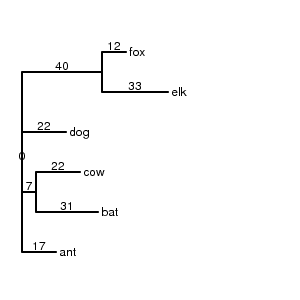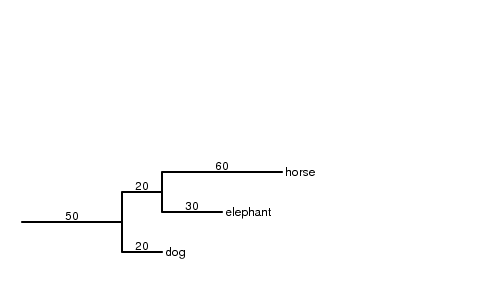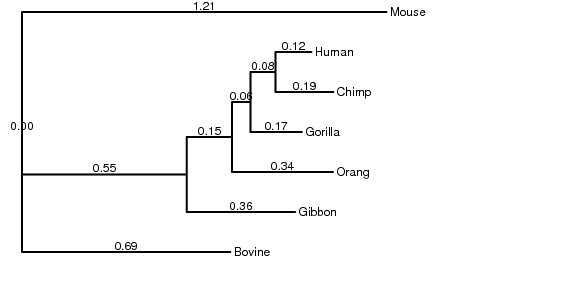
(ant:17, (bat:31, cow:22):7, dog:22, (elk:33, fox:12):40);is thre tree with three leaves. The left child of the root is ant with a arc 17 long. The right child is branch 7 long with to an internal node with left and right branches of bat and cow respectively.

A rooted tree:
(dog:20, (elephant:30, horse:60):20):50

Here is an example from the phylip web site:
(
(raccoon:19.19959,bear:6.80041):0.84600,
(
(sea_lion:11.99700, seal:12.00300):7.52973,
(
(monkey:100.85930,cat:47.14069):20.59201,
weasel:18.87953
):2.09460
):3.87382,
dog:25.46154
);
and
(Bovine:0.69395,(Gibbon:0.36079,(Orang:0.33636,(Gorilla:0.17147,(Chimp:0.19268, Human:0.11927):0.08386):0.06124):0.15057):0.54939,Mouse:1.21460)

Optionally one can label internal nodes. For example:
((cow:12, gnu:10)bigThings:3, (ant:23, bat:19)smallThings:5);